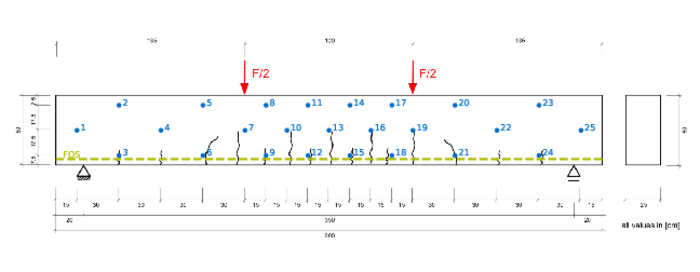Large scale hybrid models for damage detection in arbitrarily shaped concrete structures
In the subproject TUM2, the coda-wave signals will be used to directly identify and track the degradation of the macroscopic structural model over longer periods of time.
Project Description
The overall goal of the Coda project could be described as the development of a permanent, robust, non-destructive monitoring technique that can detect damage in concrete. The approach of the subproject TUM2 is to use a digital twin on a structural scale that contains next to measured coda data also all kinds of other measurement data (e.g., strain gauges, displacement sensors, temperature sensors) as well as computed sensitivities of the structure and the coda signal. In the end, the developed digital twin should be applied and demonstrated with the real structures (Gänstorbridge and a subway station in Munich). A breakdown of this idea yields four main objectives of this subproject:
- To further investigate the influences of complicated geometries on the coda measurements
- Further development of damage localization techniques for robust application in the field.
- To find threshold values for damage detection in practice, using real structures.
- To develop a digital twin that uses all the measured data of a structure to quantify structural model parameters. The digital twin should then also be used to investigate structural mechanics-related effects on the coda signal.
Previous Results
The project applies approaches to derive local degradation (localized but unspecified damage zones) from the observation of large-scale information. The following research results have already been obtained:
- Development of a finite element (FE) -based methodology for damage localization with coda waves
- Use of unstructured meshes that allow a description of arbitrary geometries
- Improvement of the established solution algorithm for the coda damage localization problem by embedding two advanced solution algorithms into the coda imaging workflow
- Successful application of the novel FE-based methodology in a real experiment (see figure). The used frequency of 60kHz marks a novelty in the sensitivity-based damage localization with coda waves. It extends the range of usable frequencies to a lower frequency regime that is more suitable for application in large structures. The application in the real experiment showed very good results since multiple close cracks could successfully be detected and distinguished.

Bottom: Results from the real experiment. The peaks in the fibre optic strain (FOS) measurement indicate the position of cracks.
